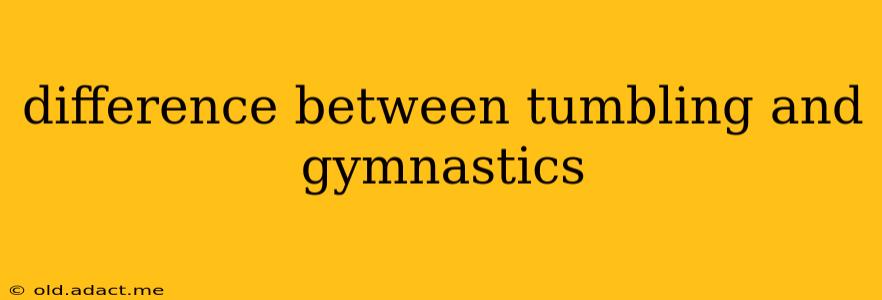Many people confuse tumbling and gymnastics, often using the terms interchangeably. While closely related, there are key distinctions between these two athletic disciplines. Understanding these differences will clarify the unique skills and demands of each.
What is Tumbling?
Tumbling focuses specifically on acrobatic skills performed on a floor mat or spring floor. These skills primarily involve a series of forward and backward rotations, including handsprings, back handsprings, cartwheels, round-offs, back tucks, and more advanced maneuvers like aerials and twists. Tumbling routines are often shorter and more focused on power, speed, and the execution of individual tumbling passes. It's often a component of other sports, like cheerleading, and can be pursued as a standalone activity.
What is Gymnastics?
Gymnastics is a much broader sport encompassing several disciplines, including artistic gymnastics, rhythmic gymnastics, and trampoline gymnastics. While tumbling skills are a significant component of artistic gymnastics (specifically the floor exercise), it also includes other apparatus work such as:
- Vault: A powerful, explosive movement over a vaulting horse or table.
- Uneven Bars: A display of strength, flexibility, and precision on a set of uneven bars.
- Balance Beam: Demonstrating balance, flexibility, and grace on a narrow beam.
Rhythmic gymnastics incorporates elements like dance, flexibility, and the manipulation of apparatus (e.g., ribbon, hoop, ball). Trampoline gymnastics, as the name suggests, utilizes a trampoline for acrobatic movements. Therefore, gymnastics is a multifaceted sport that demands a wider range of skills beyond just tumbling.
Is Tumbling Part of Gymnastics?
Yes, tumbling is an essential part of artistic gymnastics' floor routine. However, it's only one aspect of the overall competition. Gymnasts must also demonstrate artistry, choreography, and execution of skills on the other apparatus to achieve a high score. A gymnast might be incredibly skilled at tumbling but still score poorly if their other skills are lacking.
What are the Key Differences Summarized?
| Feature | Tumbling | Gymnastics |
|---|---|---|
| Focus | Acrobatics, primarily rotational skills | Diverse disciplines, including acrobatics |
| Scope | Narrower, often standalone or part of other sports | Broader, encompassing multiple disciplines |
| Apparatus | Primarily floor mats/spring floor | Floor, vault, uneven bars, balance beam, trampoline (depending on the discipline) |
| Routine Length | Shorter routines focusing on tumbling passes | Longer routines incorporating multiple skills & apparatus |
| Scoring | Often judged based on difficulty and execution of tumbling passes | Judged on a wider range of skills and artistry across apparatus |
How Do I Choose Between Tumbling and Gymnastics?
The choice depends on your individual interests and goals. If you love the thrill of acrobatic movements and the challenge of mastering increasingly difficult tumbling passes, tumbling might be the perfect fit. However, if you enjoy a more diverse range of skills and the artistry of gymnastics as a whole, then gymnastics would be a more suitable option.
What are the benefits of tumbling and gymnastics?
Both activities offer numerous physical and mental benefits, including increased strength, flexibility, coordination, balance, and discipline. They promote fitness, build confidence, and provide a sense of accomplishment.
Are there different levels of tumbling and gymnastics?
Yes, both tumbling and gymnastics have various levels of difficulty and competition, catering to different age groups and skill levels, from beginner to elite.
This detailed comparison should help you understand the nuanced differences between tumbling and gymnastics. Remember to consider your individual preferences and ambitions when choosing which path to pursue.
